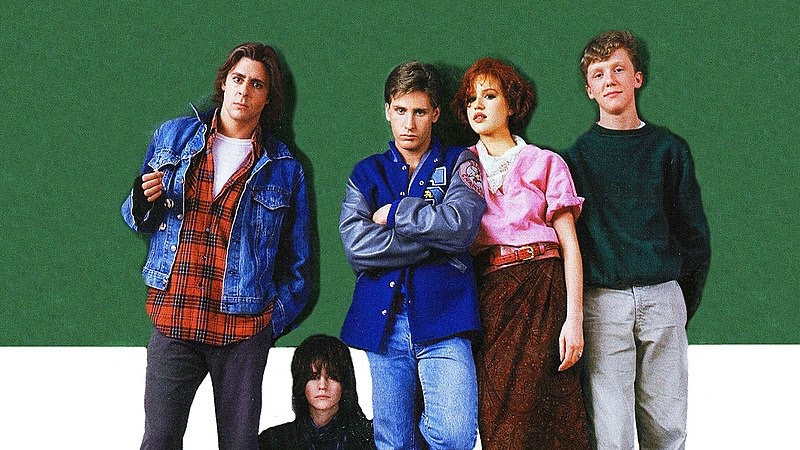High school movies through each decade
The evolution and contrast of different films from 1970 to present times.
Movies with high school themes have evolved, yet still kept the element of chaoticness of teens.
November 18, 2020
Warning: Spoilers Ahead
After watching the movie, “Dazed and Confused” (1993) for the first time, it left me wondering about the diversity in interpretations of what the life of high school students was/is like from the 70s to current day.
With movies like “Grease” (1978) and “The Kissing Booth” (2018), the big dynamic between the two is the physical aspect of how they were filmed and the development of technology throughout the years. They share in common the perspective of what the lives of high school students do from day to day and what challenges they might face, like relationship complications and discovering social status.
High school movies are definitely more frequent in the 2000s than any other time period. Just to name a few, “Mean Girls”, “Napoleon Dynamite”, “Bring it On”, “She’s the Man”, and “John Tucker Must Die” are some of the more well known high school settings released in the 2000s.
From the 80s, the most symbolic high school movies were “Ferris Bueller’s Day Off”, which shows what could have been thought to be the worst of the shenanigans that a high schooler could do in such a short amount of time. Contrary to that, “The Breakfast Club” was directed towards an older audience, being that it consists of more mature themes such as the use of drugs while being underage, multitude of profanities, and is not as light-hearted.
Over the years, themes of social groups and cliques remained consistent. For instance, “Grease” had major themes of social classes with the greasers, jocks and nerds. “The Outsiders” (1983) includes a few of the same social issues, except the main rift is between the greasers and the Socs.
In contrast to “Grease,” a more recent high school movie revolving around social status is “Mean Girls” (2004) with more timely cliques such as Jocks, Girls Who Eat Their Feelings, Desperate Wannabes, and the most well known of all, The Plastics.
The one major comparison that I noticed through all of these movies is that throughout the decades, the story line and obstacles become progressively complicated.
As time went on, high school movies became more tacky and predictable, yet still entertaining to watch, like “She’s the Man” (2006) and “She’s All That” (1999). Both movies are really entertaining, but they are also extremely similar. We all knew that the main male character was going to end up in a relationship with the main female character. Even the names “She’s the Man” and “She’s All That” are similar.
The only high school movie relationship that surprised me was that from “Clueless” (1995). I am still extremely confused after seeing it a multitude of times. I’m aware it’s only a 90s flick, but who thought it would be a good idea to write that Cher and her ex-step brother were going to get romantically involved? Also the fact that Cher is underage and her ex-step brother is in college.
Finally, my all time favorite movie that I watch almost every single week is “10 Things I Hate About You” (1999). I adore this movie with my entire life because it is the most realistic high school movie and includes a lot of real life teen situations such as sibling rivalry, stereotypes, authority and rebellion, individualism, reputation, and popularity, to name a few.
“10 Things I Hate About You” made me laugh, cry, and wish that I could go to Padua High. If you have not seen “10 Things I Hate About You,” I highly recommend you see it because it is by far the best movie from that time era.
With this all in mind, movies of high school settings have changed, but also remained with the same level of mischievousness and chaos when it comes to the intentions of the teenage mind.
From the time era of “Carrie” (1976) to “Napoleon Dynamite” (2004), there are many differences between portrayals of high schoolers in films, but there are also a handful of similarities. It really shows how the directors, writers and actors from different times viewed contrasting situations of teens in their years of high school. They all wanted to bring those ideas to the big screens and they wanted to have high school viewers relate to a character.



